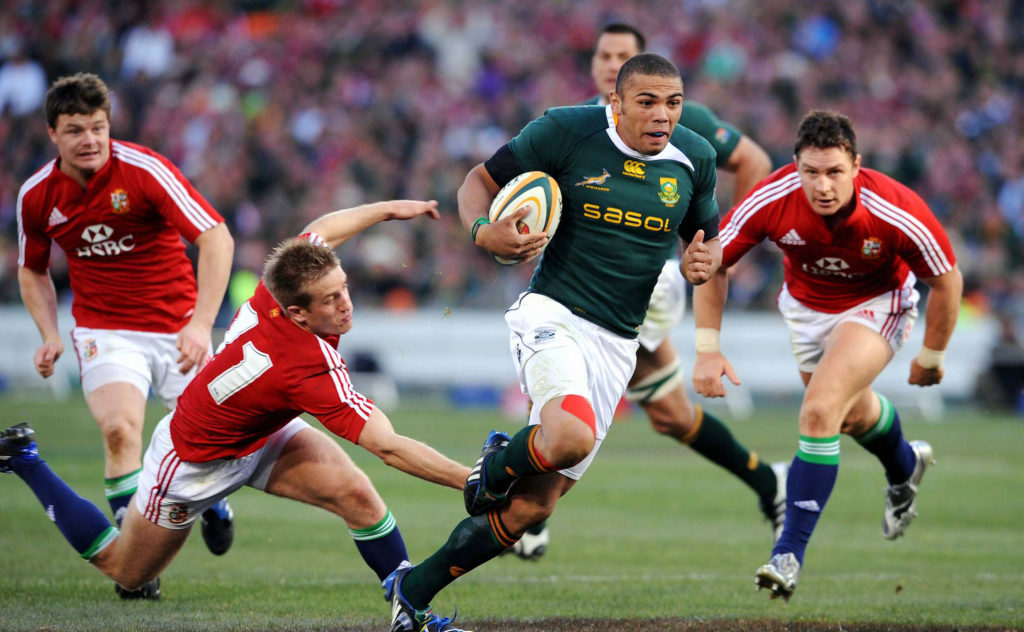To mark its 20th anniversary in 2015, SA Rugby magazine selected the 20 best Springboks of the preceding 20 years. Here’s who made the list…
ANDRÉ JOUBERT
Affectionately known as the ‘Rolls-Royce of fullbacks’, Joubert was a dangerous runner when coming into the line, solid under the high ball and on defence, and had a good left boot. He was also courageous, as shown when he broke his hand in the Boks’ quarter-final against Samoa at the 1995 World Cup. As captain Francois Pienaar revealed in his book, Rainbow Warrior, Joubert used the injured hand to knot his tie after the game, without showing any signs of pain, before going for an operation that night to have metal pins inserted to stabilise it. The fullback would spend two sessions in a decompression chamber to reduce the swelling and wear a protective glove, which was flown in from Ireland, for the semi-final against France and final against New Zealand. When asked in 2013 how he had managed to perform so well with a broken hand, without painkillers or injections, Joubert put it down to the ‘power of the mind’. After his 1995 heroics, he would be named SA Player of the Year in 1996, before playing the last of his 34 Tests in 1997. – Simon Borchardt
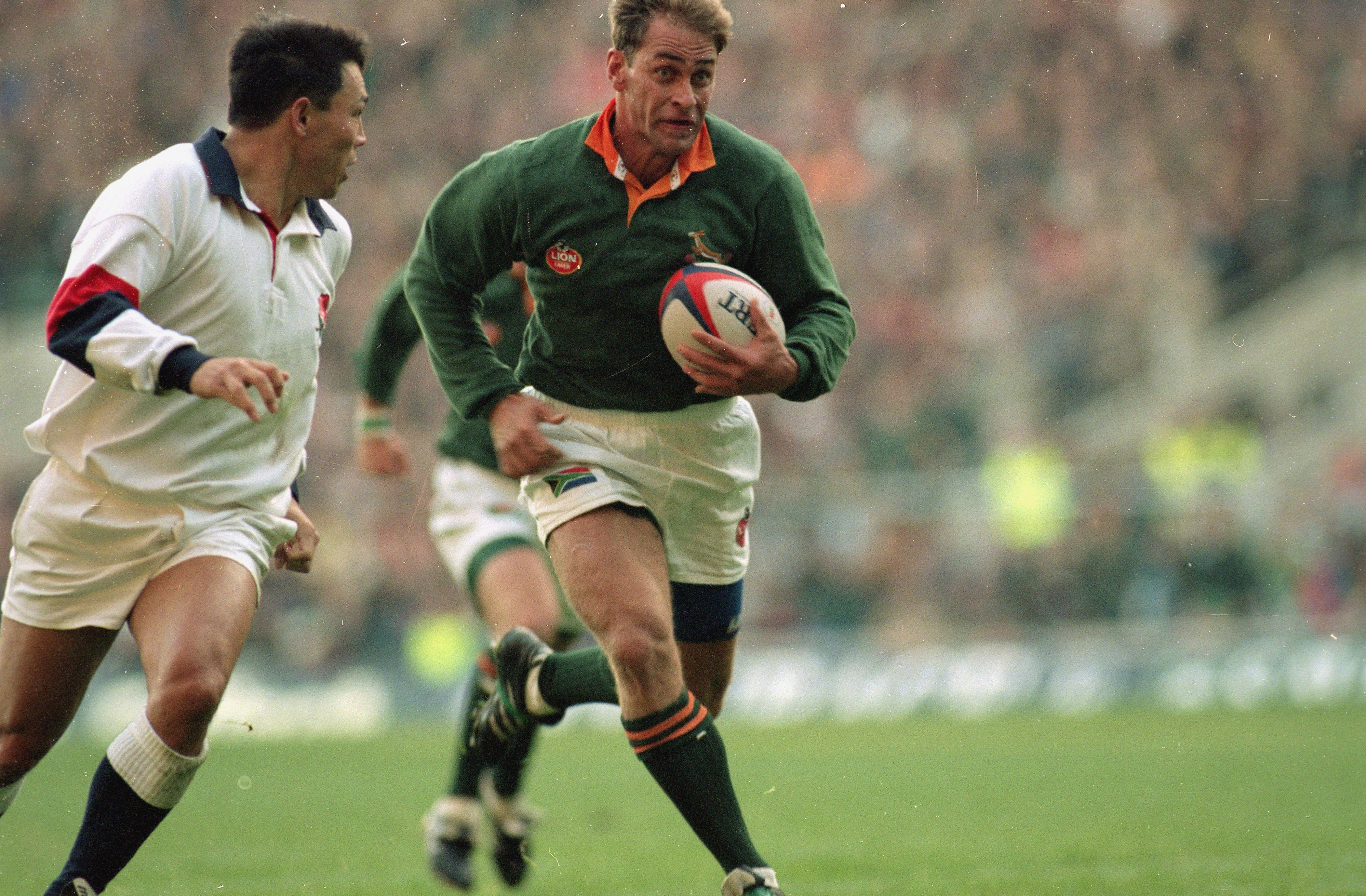
PERCY MONTGOMERY
Montgomery’s finest match, in the context of his career and the significance of the outcome, was the 2007 World Cup final in Paris. He tore the cruciate ligaments in his knee within the first 20 minutes of the match but refused to leave the field, getting the knee strapped as tight as possible and kicking four penalties in the Springboks’ 15-6 win against England. Coach Jake White described his performance as one of the most heroic and bravest he had seen. Montgomery said he had prepared his entire career for the occasion of a World Cup final and wasn’t prepared to give in to injury. Maligned in the early stages of his career, he proved to be everything but a show pony, especially in his last four years as an international player. He attributed his growth to the three years he spent playing club rugby in Wales, which also evoked a passion to play international rugby again and return to South Africa to make a meaningful and lasting contribution to Springbok rugby. Montgomery achieved this goal with his influential role in the Boks’ 2007 World Cup campaign, where he maintained an 80% goal-kicking success rate. He also became Springbok rugby’s first Test centurion post the World Cup success and is the leading point-scorer in Springbok rugby. – Mark Keohane

CHESTER WILLIAMS
Williams defied racial prejudice, career-threatening knee injuries and the game’s most physical opponents to leave his imprint as one of the greats of the South African game and one of the world’s best wings of his era. Paraded as the face of South Africa’s hosting of the 1995 World Cup, he experienced a fairytale tournament after initially being ruled out because of injury. Williams tore a hamstring a month before the tournament, but recovered to be drafted into the squad at the quarter-final stage when suspension ended wing Pieter Hendriks’s World Cup. Williams responded with a brilliant display of finishing to score four tries in the quarter-final win against Samoa and played the semi-final and final as the starting left wing. Injury would curtail his international career post the World Cup but he fought back from several operations to again play for the Springboks in 2000 and played his last Test that year in the 23-13 win against Wales. He remained involved in the game as the coach of the Springbok Sevens team that won bronze at the 2002 Commonwealth Games and finished runners-up in the World Series in the same year. He would further his professional coaching career in Uganda, Tunisia and in Romania, where he guided RCM Timisoara to the premier provincial title. He has also been actively involved in developing the game in Brazil and this year the national domestic championship was renamed in his honour. He has ambitions of coaching the Springboks but his legacy will always be his World Cup-winning contribution of 1995. – Mark Keohane
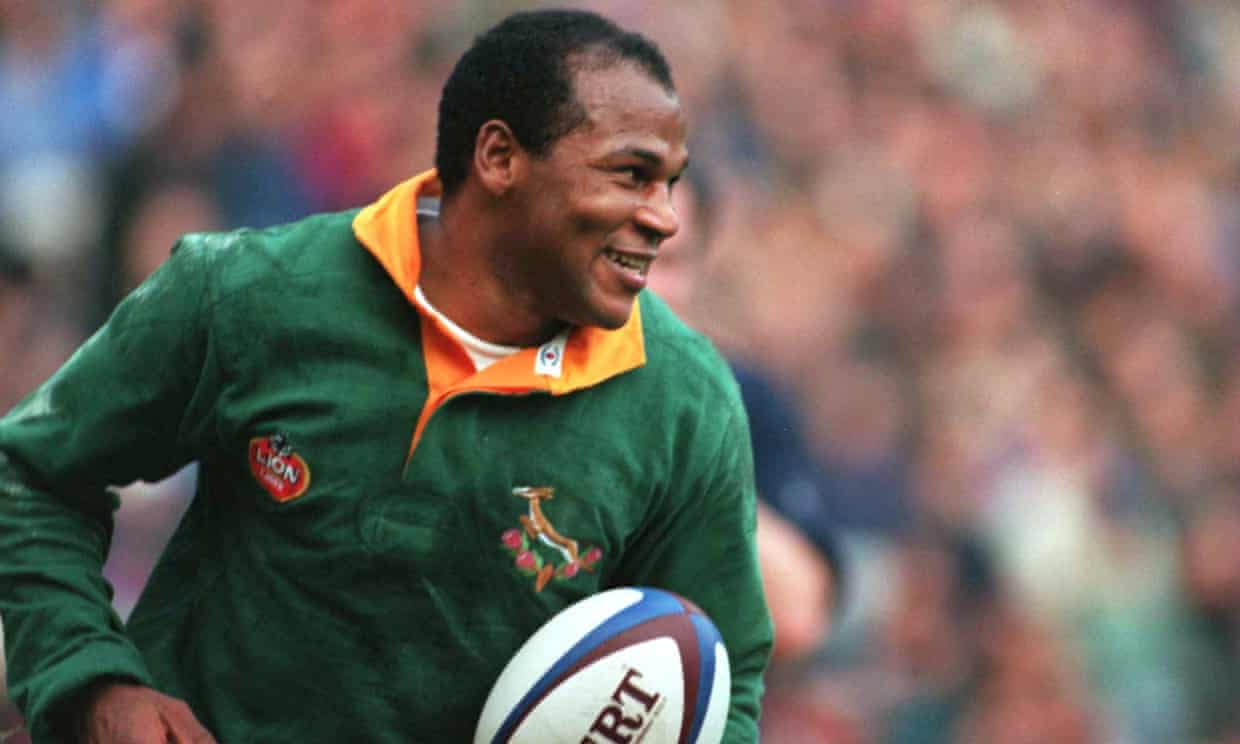
BRYAN HABANA
In his pomp, Habana was the most lethal finisher in the game. His ability to hurt the opposition in a myriad ways earned him the respect of the rugby world and won the Springboks games they would otherwise have lost. His top-end speed was celebrated most often, but it was his acceleration from a standing start that engineered many of his scoring opportunities. He needed little space to operate, dancing and dinking his way through crowds of would-be tacklers. Once he shifted through the gears, Habana would more often than not leave a clutch of defenders in his wake. The mere sight of him on the field of play would unsettle the opposition. Often they’d deploy multiple markers in a bid to nullify his threat, which simply created space for his teammates to exploit elsewhere on the field. It was no surprise that he became the Springboks’ leading try-scorer. While his powers have waned, he remains a key member of the team. The nation hopes he discovers some throwback form as the Boks bid to win their third World Cup. – Ryan Vrede
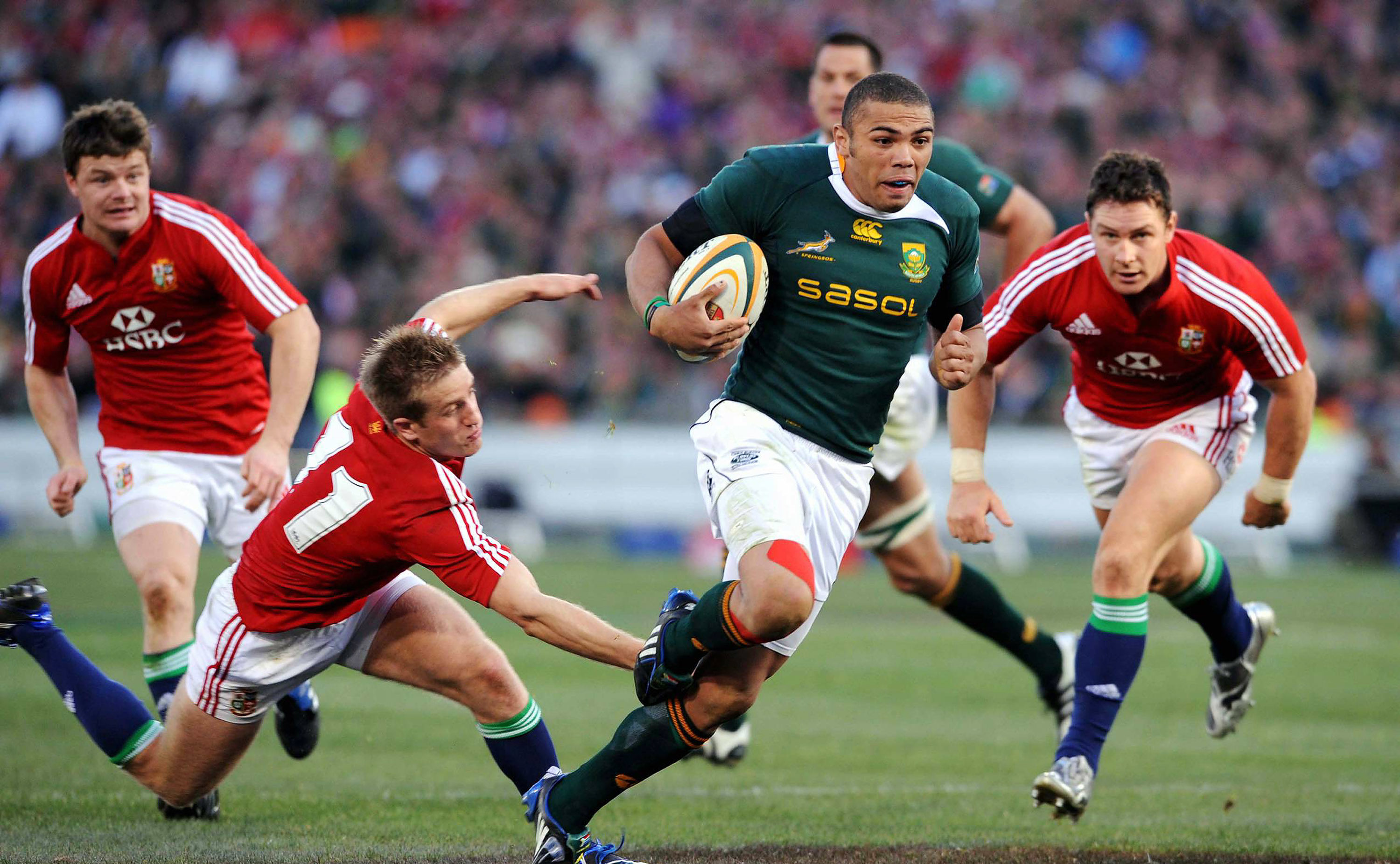
JEAN DE VILLIERS
Those with a trained eye know instinctively when a player is special. When De Villiers broke on to the scene as a fresh-faced kid, it was obvious his gifts transcended those of the bucks trying to make their way in the professional game at the time. He debuted for the Springboks before he played a Super Rugby match, with his technical and physical prowess seeing him shift between centre and wing in the infancy of his career with great success. He later settled in midfield, where he has built a reputation as one of the finest No 12s. He played an integral role in the Springboks’ 2004 and 2009 Tri-Nations triumphs and starred in the 2009 series defeat of the British & Irish Lions. Injury curtailed his involvement in the Springboks’ 2007 World Cup win and once again threatens his participation in the 2015 showpiece, which will surely be his last if he does recover in time. You need only listen to his teammates’ desperate pleas for the medical staff to get their captain up and running to know how high a premium they place on his involvement. – Ryan Vrede
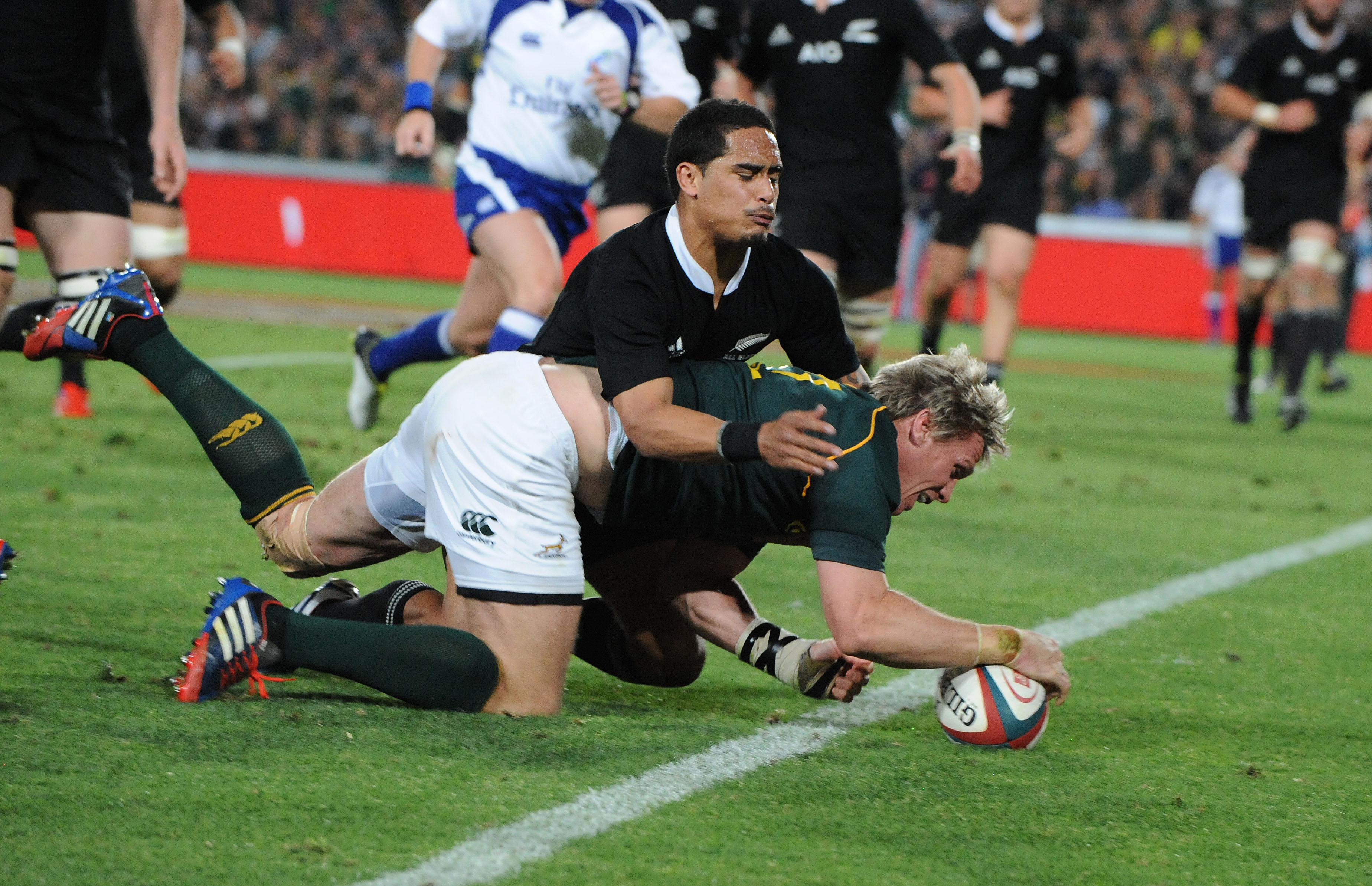
JAQUE FOURIE
You’d struggle to build an argument for a better Springbok outside centre than Fourie. Some who followed his career closely still advance Danie Gerber’s case ahead of Fourie’s, but most objective pundits concede that ‘Mossie’ has a slight edge. Most of his junior days were spent at fullback but once he made the shift to No 13 his star began to rise quickly. Defensively it is the most challenging position on the field, but Fourie has never looked anything but assured, particularly when partnering Jean de Villiers – the pair sharing a near telepathic understanding. From an attacking perspective, Fourie’s size and deceptive speed, combined with excellent timing and spacial awareness sets him apart as one of the most potent strike runners in the game’s history. His 28 tries in 61 Tests as a midfielder is a Bok record that will take some beating. The Boks have struggled desperately to fill the void he has left since he announced his unavailability for selection. They would be well advised to get him to agree to one final fling in England in September. His presence is power. – Ryan Vrede
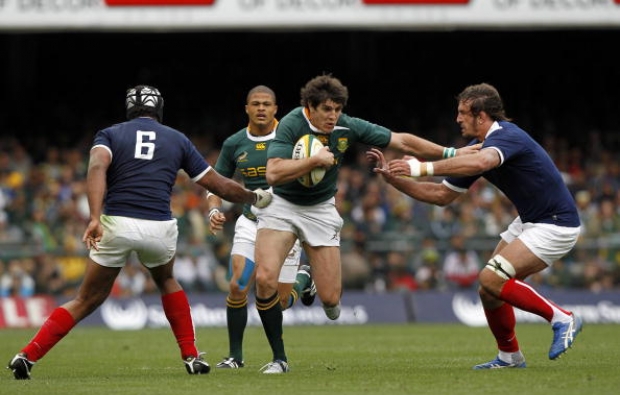
FRANS STEYN
Steyn was picked for the tour to Ireland and England in 2006 after a few Currie Cup games. Bok coach Jake White backed the 19-year-old utility back to start in all three matches, and Steyn backed himself to make an impact. The rugby world sat up and took notice when he landed a monster drop goal in the first Test against England at Twickenham. That siege gun boot would be responsible for some important victories over the next few years. Two second-half drop goals in the opening Test of the 2007 Tri-Nations against Australia. A long-range penalty to put the result of the 2007 World Cup final beyond doubt. A late conversion against the All Blacks in 2008 to end the Boks’ 10-year drought in New Zealand. A formidable line-kicking performance in the 2009 series win against the British & Irish Lions, and then again in the Boks’ drive to a Tri-Nations triumph. By the 2011 World Cup, Steyn’s legend as a kicker of power and influence had grown. While he hasn’t featured much for the Boks since then, there is still time for the now 27-year-old to add to that legacy. – Jon Cardinelli

JOEL STRANSKY
Stransky scored 240 points in 22 Tests, but it’s the 15 he got in the 1995 World Cup final against the All Blacks at Ellis Park, and the last three in particular, that defined his career. Two penalties and a drop goal from the flyhalf gave the Springboks a 9-6 lead at half-time, with Andrew Mehrtens’ second-half drop goal making it 9-9 at full time. Mehrtens put his side in front early in the first half of extra time with a 55m penalty, but Stransky made it 12-12 with his fourth penalty just before half-time. Then, two minutes into the second half of extra time, the Boks were awarded a scrum just outside their 22m and Joost van der Westhuizen sent the ball back to Stransky, who slotted the drop goal that wrote his name into rugby history. The 27-year-old also had a memorable first outing at that World Cup, in the 27-18 win against the Wallabies at Newlands, becoming the first Bok to score a try, conversion, penalty and drop goal in the same match. After playing his last Test for the Boks in August 1996, Stransky joined Leicester in 1997 and looked set to play for England, before it was discovered he did not qualify to do so. – Simon Borchardt
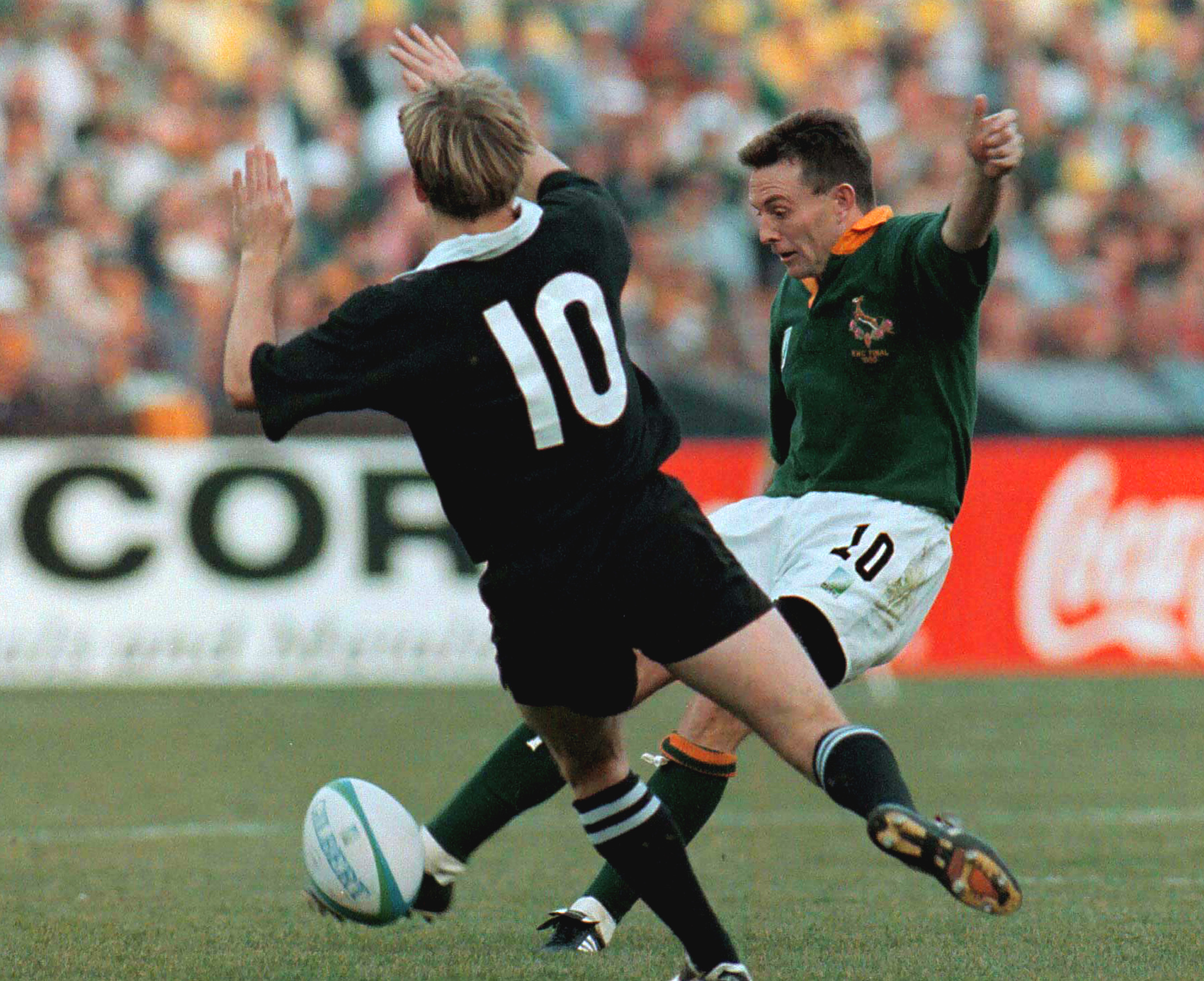
HENRY HONIBALL
Honiball was nearly lost to rugby in early 1992 when he moved back to his family’s Bergville farm after studying in Bloemfontein. But fortunately he was persuaded, against his father’s wishes, to pursue a rugby career that saw him win acclaim as perhaps South Africa’s finest post-isolation flyhalf. Honiball only played 35 Tests for South Africa but he was influential in most of those, with his strong tackling sending fear through opposing backlines, while his flat-lining style helped galvanise the Boks into an excellent attacking team during the Nick Mallett era when he was a pivotal part of the record-equalling 17-match unbeaten run in 1997-98. He wasn’t known for being talkative on the field, but he was an astute reader of the game, and Mallett tells the story of how Honiball scripted the move that enabled Pieter Rossouw to score the match-clinching try in the first post-isolation Bok victory on New Zealand soil, in 1998. He missed the 1995 World Cup because of injury and was prevented from playing an influential part in 1999 by a niggling injury that kept him sidelined for most of the tournament. Honiball is the only one of SA Rugby magazine’s top 20 Boks since 1995 to have never been on the cover. – Gavin Rich
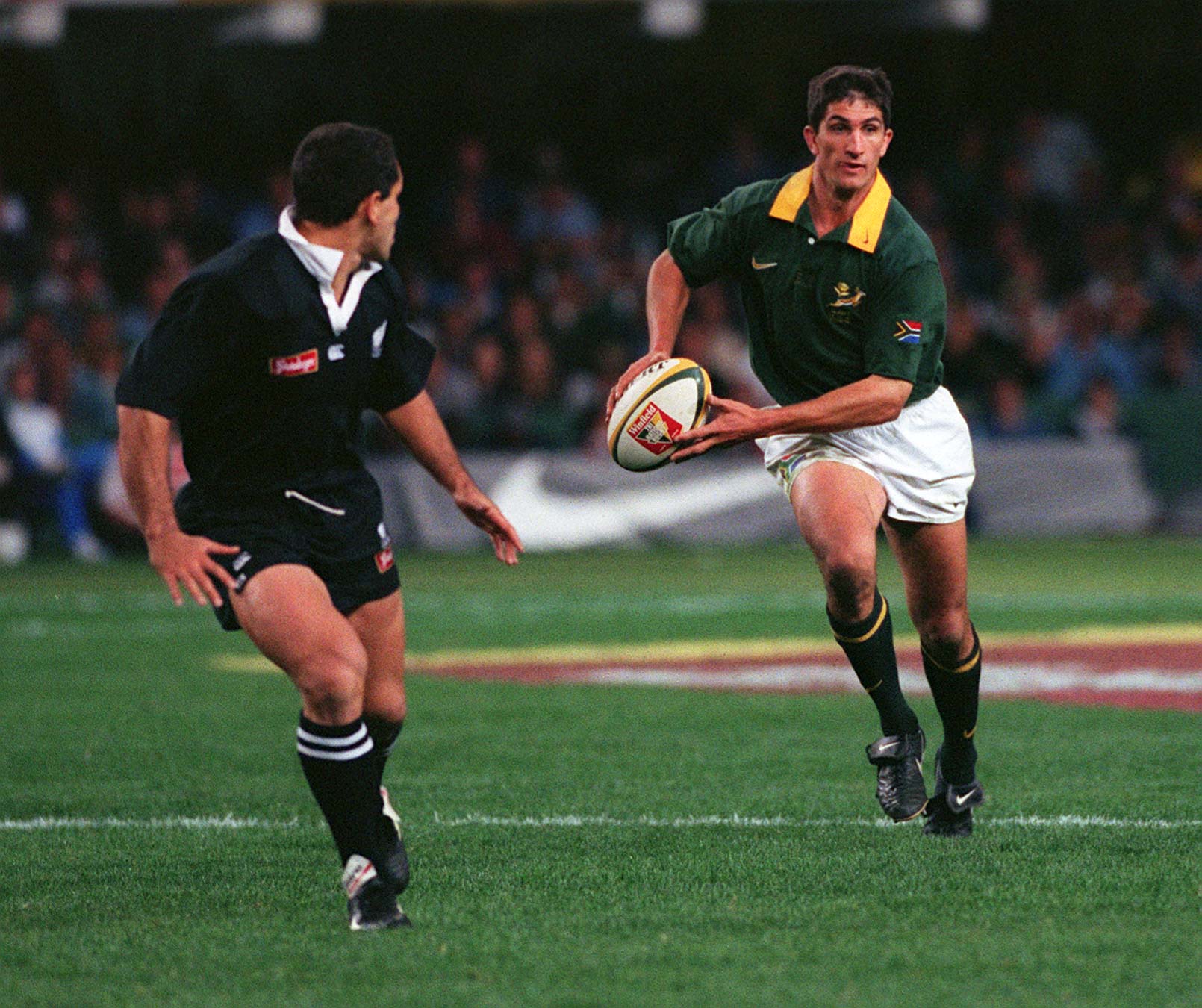
JOOST VAN DER WESTHUIZEN
Van der Westhuizen’s induction into the International Rugby Hall of Fame in 2007 was confirmation that it wasn’t only South Africans who appreciated the play of the long-serving Springbok scrumhalf. Explosive around the fringes and a great cover tackler, he played a crucial role in the two big events that put the Springboks back on the rugby map on their return from isolation in the 1990s. The first was in the 1995 World Cup final, where Van der Westhuizen inspired his teammates with big early tackles on All Blacks wing Jonah Lomu, while in 1998 he played Wallabies flyhalf Stephen Larkham out of the game in what was effectively the Tri-Nations decider at Ellis Park. For a long time Van der Westhuizen held the Springbok try-scoring record, which was a testimony to his strength and acceleration around the fringes. Perhaps his most famous try was the one he scored against England in the 1999 World Cup quarter-final in Paris. Counting tour games, Van der Westhuizen scored 56 tries in 111 games for the Boks, and still holds the record for the most tries scored in Tests by a scrumhalf. – Gavin Rich
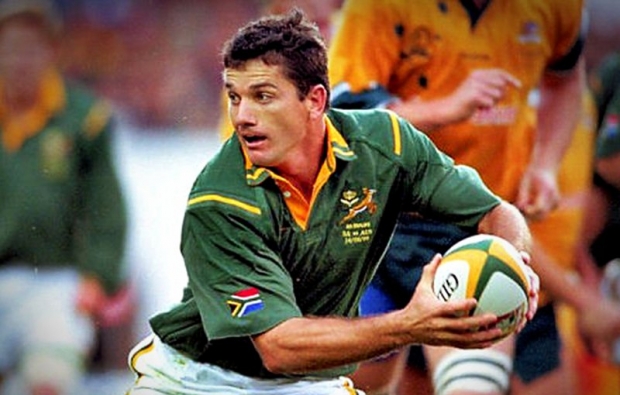
FOURIE DU PREEZ
Over the course of Du Preez’s career, coaches, teammates, and even opponents have marvelled at his ability to read and then influence a contest. Game plans have been built around his silky passing and tactical-kicking game. The results of major Tests have hinged on his decision-making and execution at key junctures. When Du Preez has played for the Boks, their attacking and tactical play have rarely been matched. This much was evident in the early rounds of the 2007 World Cup, most notably in the pool match against England. Du Preez stood out as one of the most influential players in the World Cup final, and again in the successful 2009 British & Irish Lions series. A few months later, his expert game management played no small part in South Africa winning the Tri-Nations. Others may have achieved more in terms of tries, points and accolades during the golden era between 2004 and 2009, but the Boks may not have scaled such heights without Du Preez pulling the strings from the No 9 position. – Jon Cardinelli
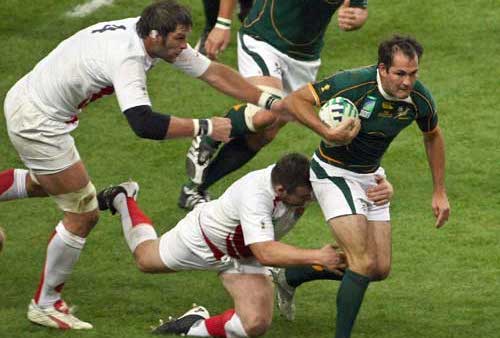
FRANCOIS PIENAAR
Having led Transvaal to the inaugural Super 10 title in 1993, Pienaar was given the Springbok captaincy by coach Ian McIntosh after the retirement of Naas Botha, even though he had yet to play Test rugby. The flanker made his debut against France in June that year, and went on to captain the team in all 29 of his Tests appearances, the last of which came in August 1996. While Pienaar’s international career was controversially ended by Bok coach André Markgraaff, it will always be remembered for what happened in 1995 under the late Kitch Christie, when South Africa won the World Cup on home soil. Pienaar was an inspirational leader throughout the tournament and famously lifted the trophy next to a beaming Nelson Mandela, who was wearing one of the captain’s No 6 jerseys. While Pienaar’s leadership skills were his biggest asset, he was a physical player who put his body on the line and earned his place in the team. With his Test career over, Pienaar moved to Saracens, who he captained to their first trophy in 127 years (the 1997-98 English Cup) before hanging up his boots in 2000. – Simon Borchardt
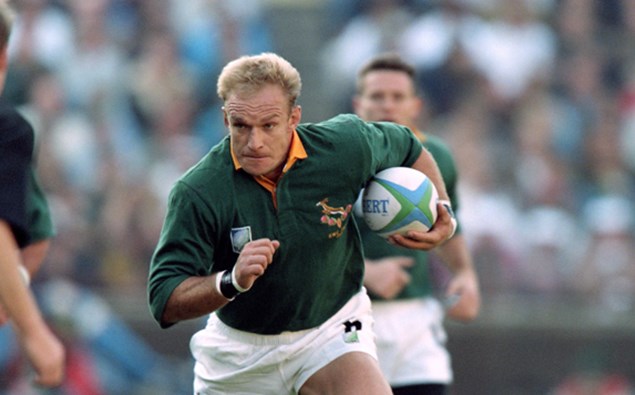
JUAN SMITH
Smith was the unsung hero for the Boks during his seven-year tenure in the side. A valuable member of Jake White’s World Cup-winning squad, the flanker was at his peak during the tournament, scoring four tries as the Boks reclaimed the Webb Ellis Cup. Quiet and unassuming off the field, his demeanour contrasted with his physicality on it. Not dissimilar to another candidate for consideration, André Venter, Smith’s lineout pedigree edges him ahead of his fellow Free State flanker. A series of Achilles injuries looked to have cut his career short but, invigorated by a move to Toulon, Smith made a return to the Bok side during last year’s Rugby Championship. After missing the 2011 World Cup through injury, the 33-year-old will have earmarked this year’s tournament as a potential swansong for his Bok career, which has spanned 11 years and 70 Tests. – Brenton Chelin
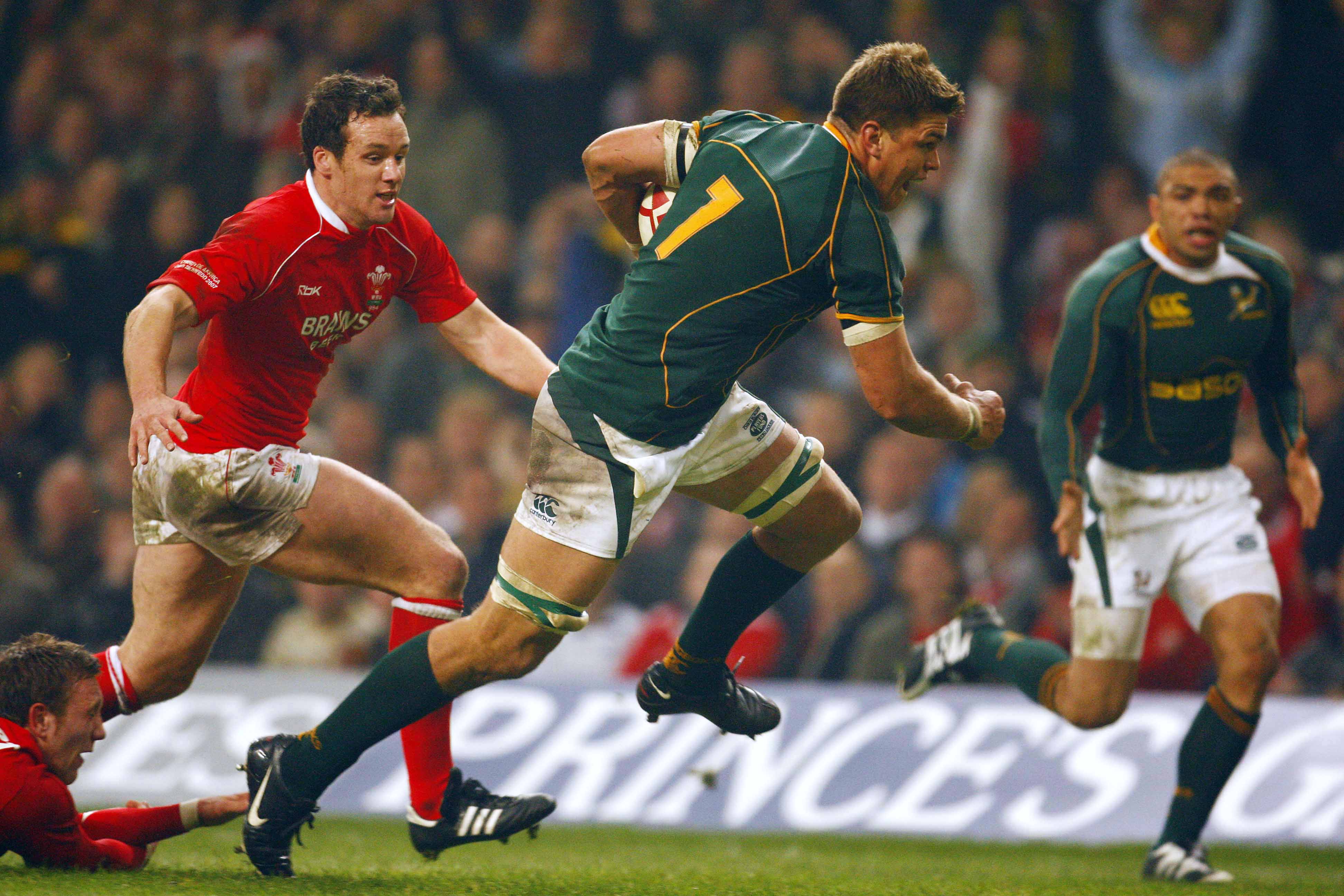
SCHALK BURGER
Burger’s rugby story, in terms of what he’s achieved with the Boks and what he’s had to overcome, will inspire generations of South Africans to come. After the Boks’ success in the 2004 Tri-Nations, Burger was named the IRB Player of the Year. He fought his way back from a career-threatening neck injury in 2006 to play an important role in the Boks’ 2007 World Cup-winning campaign. His uncompromising physical approach has earned him respect from teammates and opponents alike, and there can be no argument regarding his status as one of the toughest players in the history of the sport. Just months after starring for the Boks at the 2011 World Cup, Burger was sidelined with a serious knee injury. A year later, he had surgery to drain a cyst on his back and picked up a hospital bug, which led to bacterial meningitis. A fight for fitness became a fight to stay alive. Against the odds, he returned to the playing field in late 2013. Fourteen months on, and Burger produced a Man of the Match performance as the Boks manhandled England at Twickenham. – Jon Cardinelli

MARK ANDREWS
Andrews was selected for the Springbok team during a crisis week in South African rugby in 1994, but immediately made an impact as he helped Francois Pienaar’s men atone for a big defeat to England at Loftus with a compelling victory in Cape Town. A formidably built man with great ball skills and impressive mobility, Andrews was a key figure in many of South Africa’s finest triumphs between 1994 and the end of 2001, with his achievements including a World Cup winner’s medal in 1995 and a Tri-Nations winner’s medal in 1998. He would have been a challenger for any World XV selected during his era and was feared and respected by opponents. Born in the small southern Drakensberg town of Elliot in the Eastern Cape and schooled in East London, Andrews was equally adept as a lineout jumper as well as being physical and aggressive, often filling the role of Bok enforcer on the field of play. – Gavin Rich
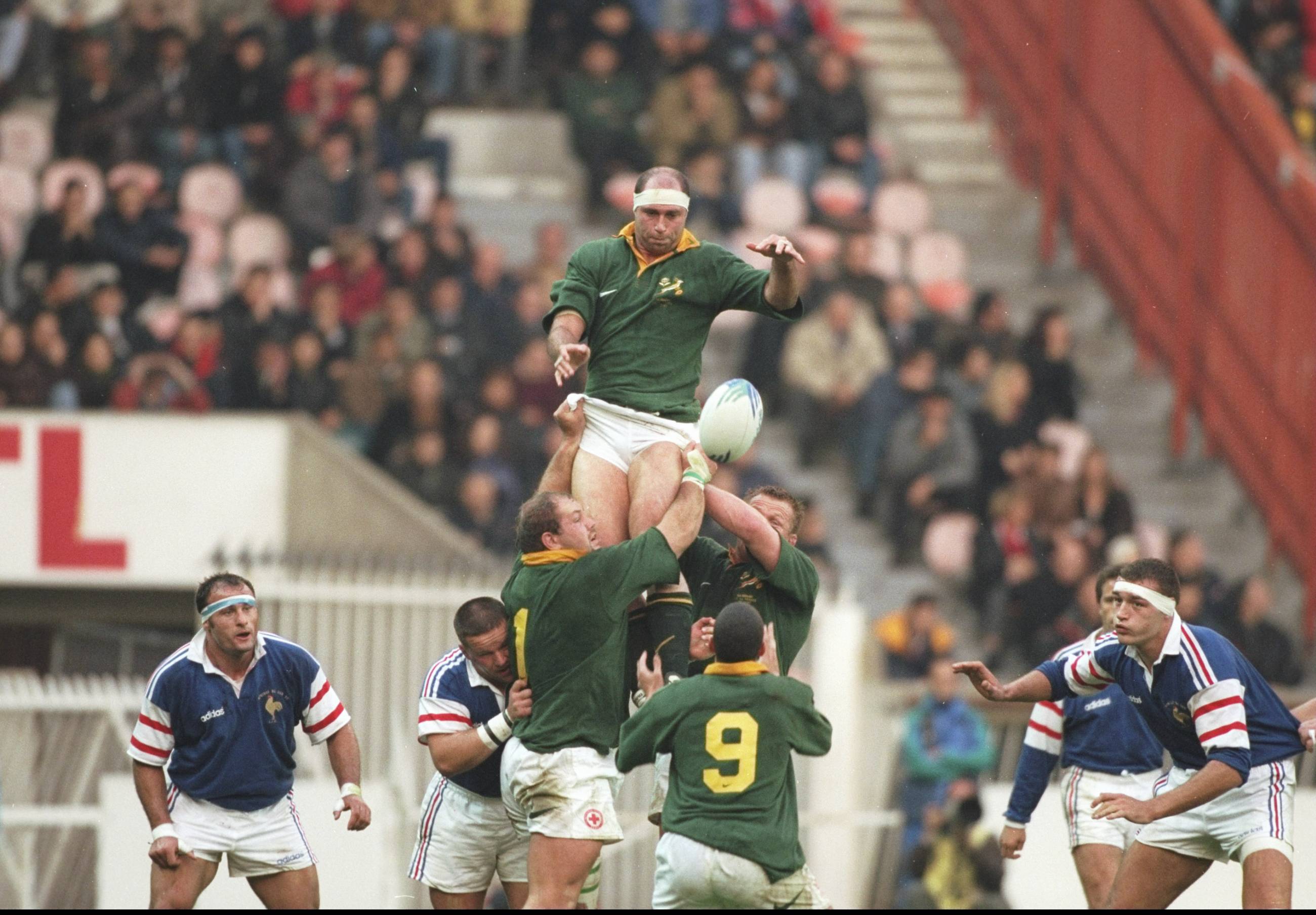
VICTOR MATFIELD
There has been no greater lineout exponent in the game than Matfield. He turned it into a science, dedicating an enormous amount of preparation time to mastering that science. For most of his career he has ruled the air in Test rugby, tormenting jumpers and hookers, often reducing the latter into nervous messes who part with the ball knowing it will never likely reach its target. To fully understand Matfield’s value you have to appreciate that the modern game places a huge emphasis on attacking opportunities from set pieces, given how sophisticated defensive systems have become in general play. Matfield has regularly stifled the opposition in this regard, while significantly improving the Boks’ ability to secure their own feed, either by calling the throw on himself or engineering a catch for another jumper. Lest we forget, he was at the heart of the Springboks’ lineout dominance during the 2007 World Cup triumph, his efforts ensuring the Springboks never lost a lineout throughout the tournament. This is not to diminish his contributions in other areas. You don’t play in 121 Tests by being a one-trick pony. Matfield’s skill with ball in hand trumped the majority of his contemporaries, his excellent conditioning allowed him to sustain his efforts over 80 minutes, while his leadership qualities were and still are a boon for the Springboks. – Ryan Vrede

BAKKIES BOTHA
The second half of ‘the blood brothers’, Botha was the grunt to Victor Matfield’s guile. By the time Botha called time on his career, bloodied and grizzled after a game-shaping performance against England last year, the two had amassed 57 Test starts as a lock pairing – a world record. However, Botha’s contribution to the game as a whole stands on its own. He won everything there is to win in Test, provincial and club rugby. The pre-eminent enforcer of the professional era, the Boks benefited from Botha’s love for the physical stuff. Few were able to dominate the gainline and bully the contact area like he did. On his day he was unplayable. Botha will call time on his illustrious career later this year, but you wouldn’t rule out a return to his beloved Bulls for one last crack at the Currie Cup before heading off for a well-deserved rest. – Brenton Chelin

JOHN SMIT
Smit’s record of 83 Tests as Springbok captain will take some beating. While he may not have been the best player in his position throughout his career, his influence was unparallelled. At his peak, Smit – who made a record 10 SA Rugby magazine cover appearances – was an inspirational presence for the Boks. The mantle of captaincy sat easy on his broad shoulders – from his first Test as captain against Georgia at the 2003 World Cup, until the Boks’ disappointing exit from the 2011 World Cup. He won it all at international level – a World Cup, the Tri-Nations and a British & Irish Lions series. He anchored the Bok scrum in a record 46 consecutive Tests between 2003 and 2007, where he struck up a winning partnership with Jake White. His place in the annals of Bok history was confirmed that heady night in Paris, but Smit’s longevity in one of the toughest roles in South African rugby confirms him as a true great of the modern game. – Brenton Chelin
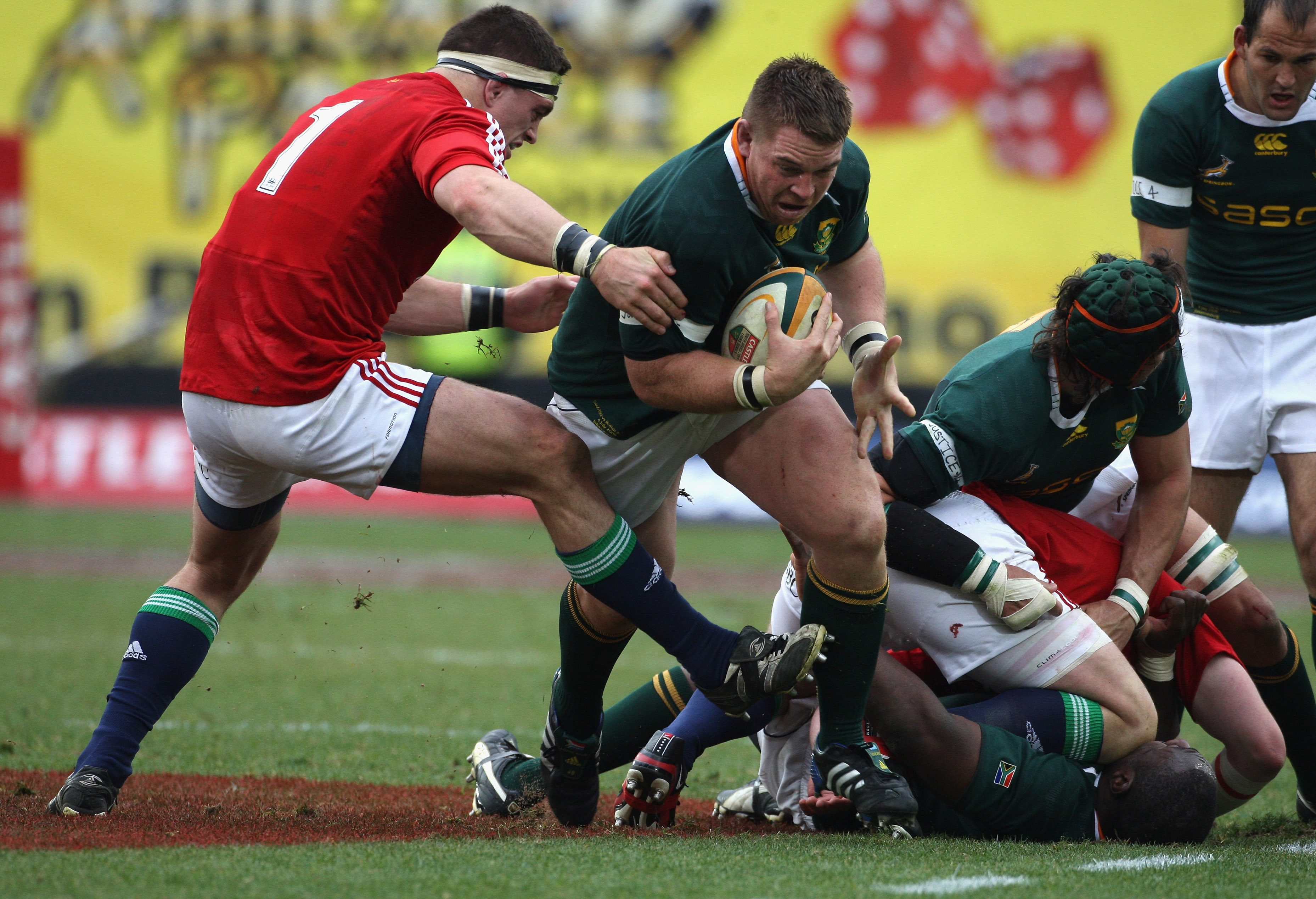
BISMARCK DU PLESSIS
A freak of nature, even by modern rugby standards. Du Plessis is a rare breed of hooker in that he boasts the physical dimensions of a traditional front ranker as well as the awareness, timing, and speed of an openside flanker. He was colossal for the Boks in their campaign against the British & Irish Lions in 2009, and in the Tri-Nations. If only coach Peter de Villiers had showed the same faith in Du Plessis’ game-shaping ability at the 2011 World Cup, the Boks may well have won the title (De Villiers opted to stick with John Smit, who was a spent force). After that disastrous campaign, new coach Heyneke Meyer moved to harness Du Plessis’ scrum and breakdown strengths. By 2013, the Boks were world leaders at the scrum, and had closed the gap between themselves and New Zealand at the breakdown. Despite wearing No 2, Du Plessis is as good as any openside in the world when it comes to winning important turnovers at the ruck. – Jon Cardinelli
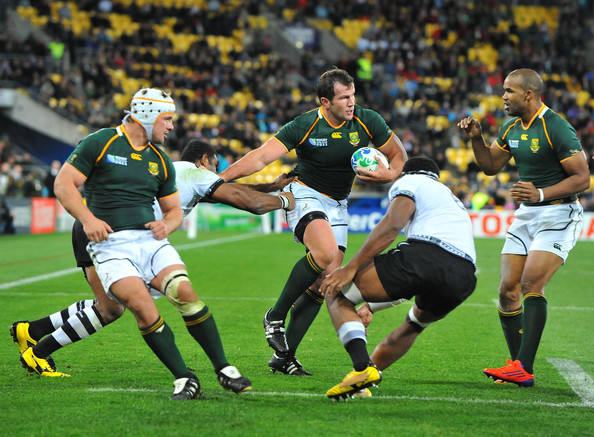
OS DU RANDT
Du Randt’s career typified every character trait that defines the stature of the greatest names to have played the game. He is the only Springbok to have won two World Cups and he featured prominently in the 1999 third-place campaign. Du Randt retired from rugby in 2000 because of recurring knee problems, but, on his appointment in 2004, coach Jake White lured the loosehead prop back to rugby. White had a belief that Du Randt, if managed carefully, still had the game to be the best front-rower in South Africa and in the world. White would be vindicated with Du Randt’s response in helping the Springboks win a Tri-Nations title in 2004 and the World Cup in 2007. His World Cup performance in 2007 was colossal, with his display in the semi-final win against Argentina particularly memorable. His 2007 World Cup-winning colleagues and the coaching staff applauded his on-field performance, senior statesmanship and mentoring of the younger Bok generation among the most significant factors in the Boks’ success. White lauded Du Randt as one of the finest to ever put on a Bok jersey and the best of the best in the past 20 years of Springbok rugby. – Mark Keohane
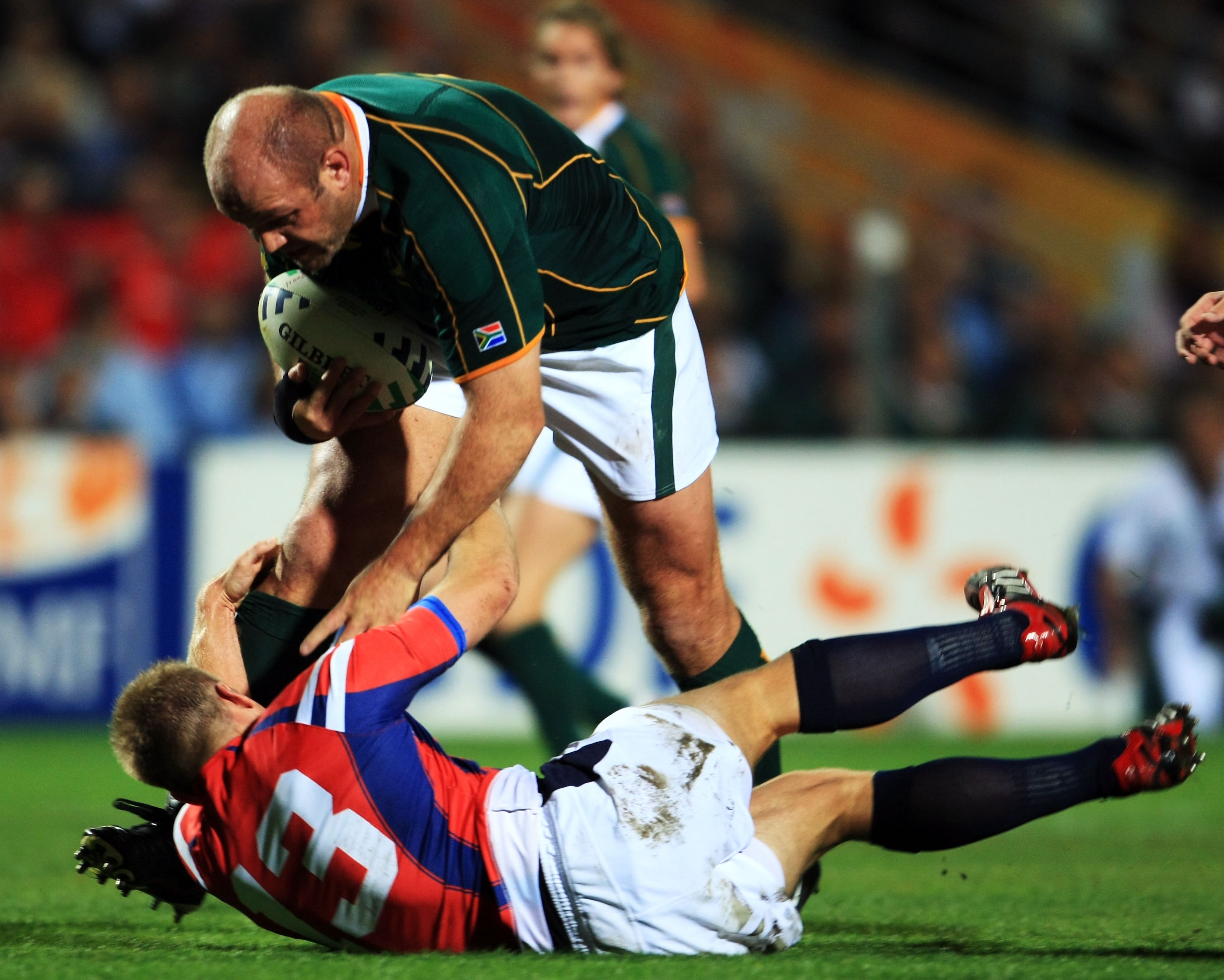
THE SELECTION PANEL
JAKE WHITE: 2007 World Cup-winning Springbok coach and current coach of French club Montpellier
MARK KEOHANE: Award-winning veteran rugby writer, founder of keo.co.za and former Springbok communications manager
GAVIN RICH: Award-winning veteran rugby writer for SuperSport.com and the Weekend Argus, among other publications
This article first appeared in the April 2015 edition of SA Rugby magazine
Photos: Gallo Images/Getty Images/Allsport


